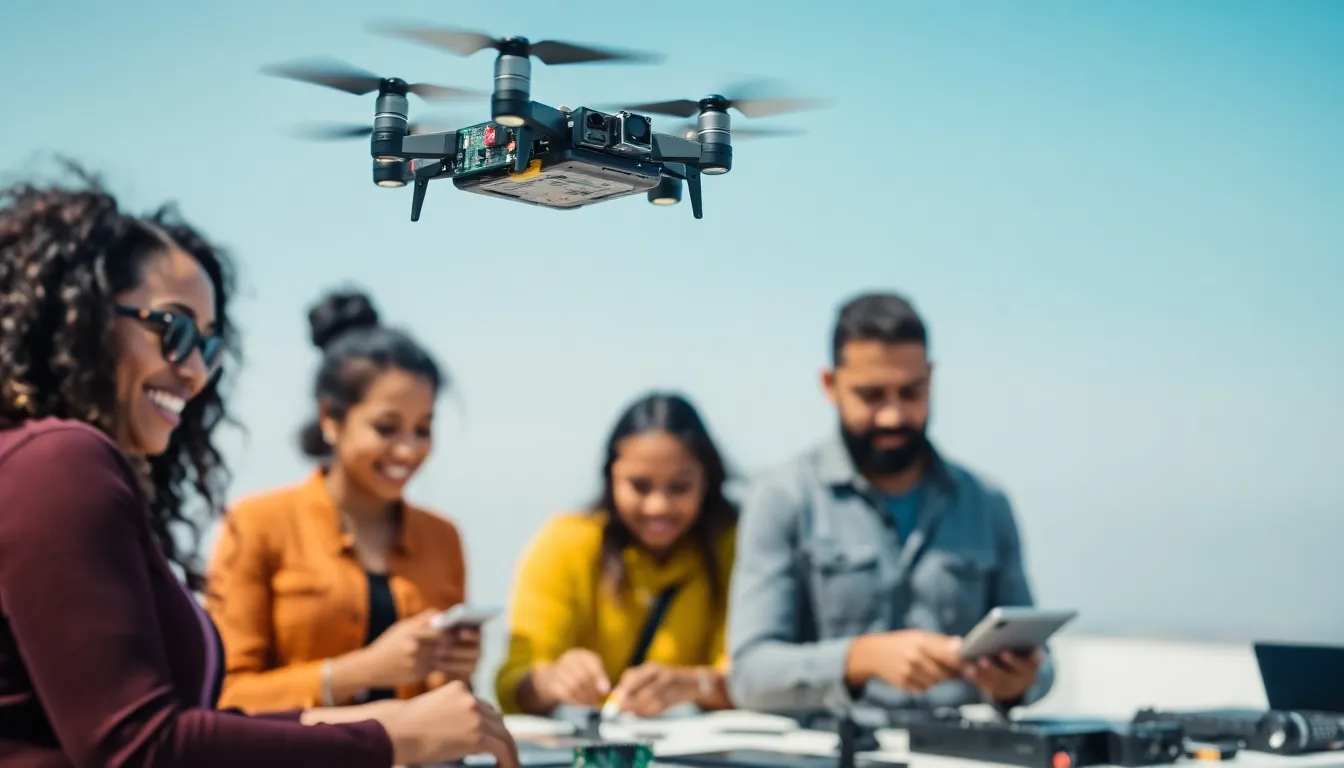Table of Contents
ToggleIn today’s tech-savvy world, drones aren’t just toys anymore. They’ve evolved into essential tools across numerous industries, blending cutting-edge technology with practical applications. Among these, the Raspberry Pi Zero thermal drone stands out, offering enthusiasts and professionals alike a compact platform to explore thermal imaging like never before. Picture yourself soaring through the skies, capturing data while keeping your feet firmly planted on the ground, if that sounds enchanting, you’re in for an adventure. Buckle up as we investigate into the thrilling world of Raspberry Pi Zero thermal drones, where innovation meets practicality.
Overview of Raspberry Pi Zero Drones

Raspberry Pi Zero drones boast an incredibly lightweight and versatile design, making them perfect for hobbyists looking to explore aerial innovations. With compact dimensions, these little marvels pack a powerful punch, proving that greatness truly comes in small packages.
One of the primary reasons people flock to Raspberry Pi Zero for drone projects is the accessibility. This makes it a popular choice for DIY enthusiasts and educators.
Benefits of Using Raspberry Pi Zero in Drones
Utilizing Raspberry Pi Zero in drones offers several advantages:
- Affordability: Compared to other drone platforms, the Raspberry Pi Zero is exceptionally budget-friendly, allowing users to experiment without very costly.
- Customization: Users can tailor their drones to specific needs. Whether it’s adding sensors, cameras, or thermal imaging capabilities, users have the freedom to innovate.
- Learning Opportunity: Building a Raspberry Pi drone provides valuable hands-on experience in programming and electronics, perfect for students and tech enthusiasts.
Thermal Imaging Technology Explained
Thermal imaging technology measures the infrared radiation emitted by objects. Drones equipped with thermal imaging cameras can see what the naked eye cannot. This unique perspective opens doors to numerous applications and industries.
Imagine exploring situations where you need to detect heat signatures, whether it’s finding lost hikers or monitoring buildings for heat loss. With thermal drones, these tasks become much simpler and more efficient.
Applications of Thermal Drones
Thermal drones find applications in various sectors, including:
- Search and Rescue: They are invaluable in emergency situations, helping locate missing persons quickly by spotting their body heat against cooler backgrounds.
- Agriculture: Farmers use thermal imaging to assess crop health, identify irrigation issues, or locate livestock, enhancing productivity significantly.
- Infrastructure Monitoring: Inspecting buildings and power lines for anomalies or inefficiencies saves time and resources while ensuring safety.
Setting Up Your Raspberry Pi Zero for Drone Use
Getting started with your Raspberry Pi Zero thermal drone requires a blend of hardware and software that works seamlessly together.
Essential Components for Assembly
Your drone assembly will need several core components:
- Raspberry Pi Zero: The brains of the operation: it controls the drone’s functionalities.
- Thermal Camera: A key component for capturing thermal images. Look for models compatible with the Raspberry Pi.
- Propulsion System: Motors and propellers that allow the drone to fly. Choose quality components to ensure stability.
- Battery and Power Management: A suitable battery provides the necessary power for your flights while maintaining a lightweight profile.
- Chassis and Frame: Select a sturdy yet light frame to house all components securely.
Software Requirements and Configuration
To bring your Raspberry Pi drone to life, you’ll need to install:
- Raspbian OS: This operating system provides a robust foundation.
- Drone Software: Use libraries like DroneKit or QGroundControl for flight control and thermal imaging data processing. Installation instructions and setup guides are widely available.
Building the Thermal Drone
Constructing your Raspberry Pi Zero thermal drone may seem daunting, but it’s quite achievable with a clear plan.
Step-by-Step Assembly Guide
- Frame Assembly: Start by assembling the frame according to the manufacturer’s instructions.
- Mount the Motors: Attach the motors securely to the chassis, ensuring they’re centered for balance.
- Integrate the Raspberry Pi Zero: Securely fit the Raspberry Pi onto the frame while connecting it to the power supply.
- Install the Thermal Camera: Position the camera for optimum viewing: software settings can often adjust the camera angle.
- Wiring: Carefully connect the wiring, ensuring no loose connections, and double-check against the schematic.
- Final Checks: Inspect all areas for stability and security before proceeding to the next step.
Troubleshooting Common Issues
Issues may arise during assembly or flight. Common problems include:
- Power Failures: Ensure your battery is charged and that connections are secure.
- Flight Instability: Check your weight distribution and motor functionality. Adjustments may fix this.
- Thermal Camera Issues: Misconfiguration can lead to malfunction: verify all software settings.
Real-World Use Cases and Projects
Real-world applications make Raspberry Pi Zero thermal drones even more exciting.
Case Study: Search and Rescue Operations
In real-life situations, search and rescue operations have benefited greatly from these drones. Using thermal imaging, teams can identify heat signatures in dense vegetation or rubble, drastically accelerating search times and potentially saving lives.
Case Study: Agricultural Monitoring
Another fascinating application is in agriculture. Farmers employing thermal drones monitor crop health, leading to enhanced yields and sustainable farming practices. They can detect irrigation issues before they escalate, saving water and resources. The increase in crop yields showcases how technology can innovate traditional practices.
Future Trends in Thermal Drone Technology
The future of thermal drone technology seems bright, with constant advancements right around the corner.
Innovations to Watch
Keep an eye on drone autonomy improvements. The integration of AI could transform how drones recognize patterns and analyze data. This advancement may enhance their operational capabilities and decision-making processes, crafting drones that can operate with minimal human intervention. Also, miniature thermal sensors are becoming more efficient, leading to lighter models with expanded functionalities. As these technologies continue to evolve, the applications will broaden, making thermal drones a staple across even more sectors.







